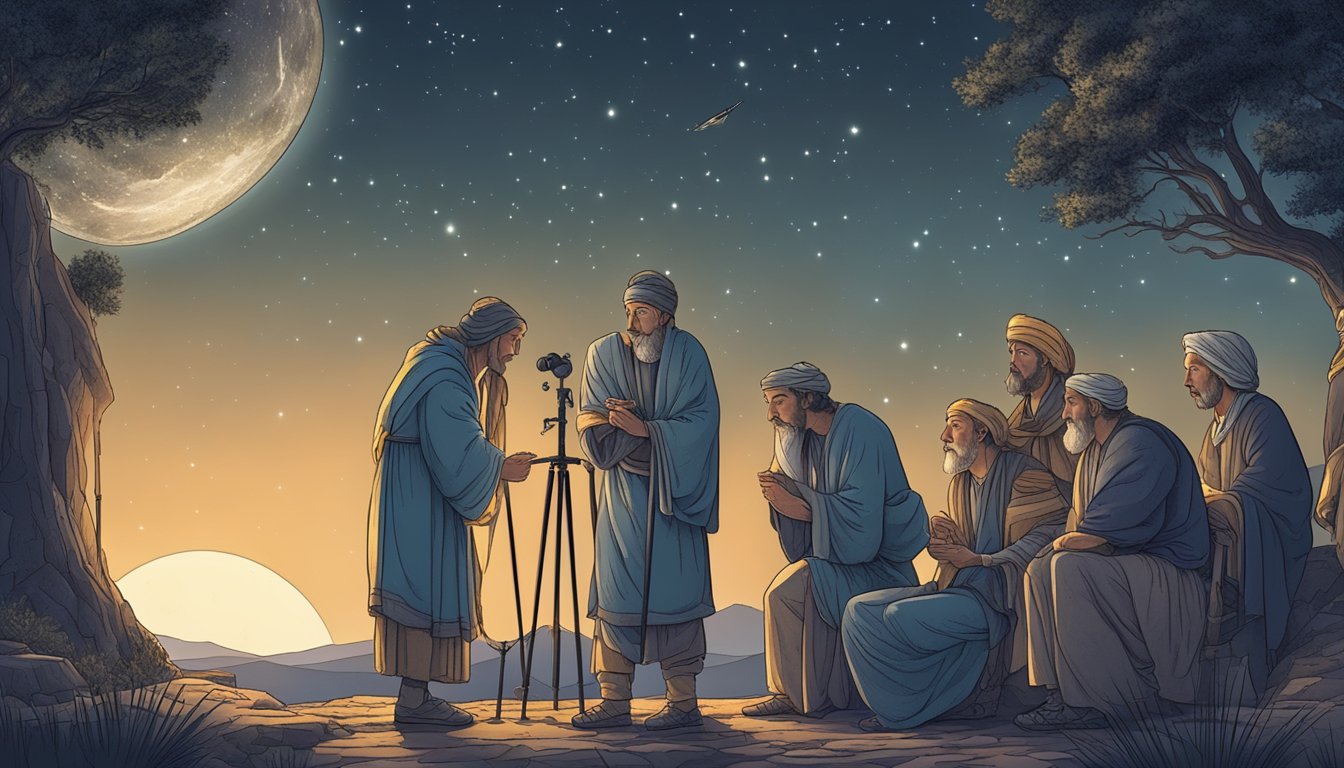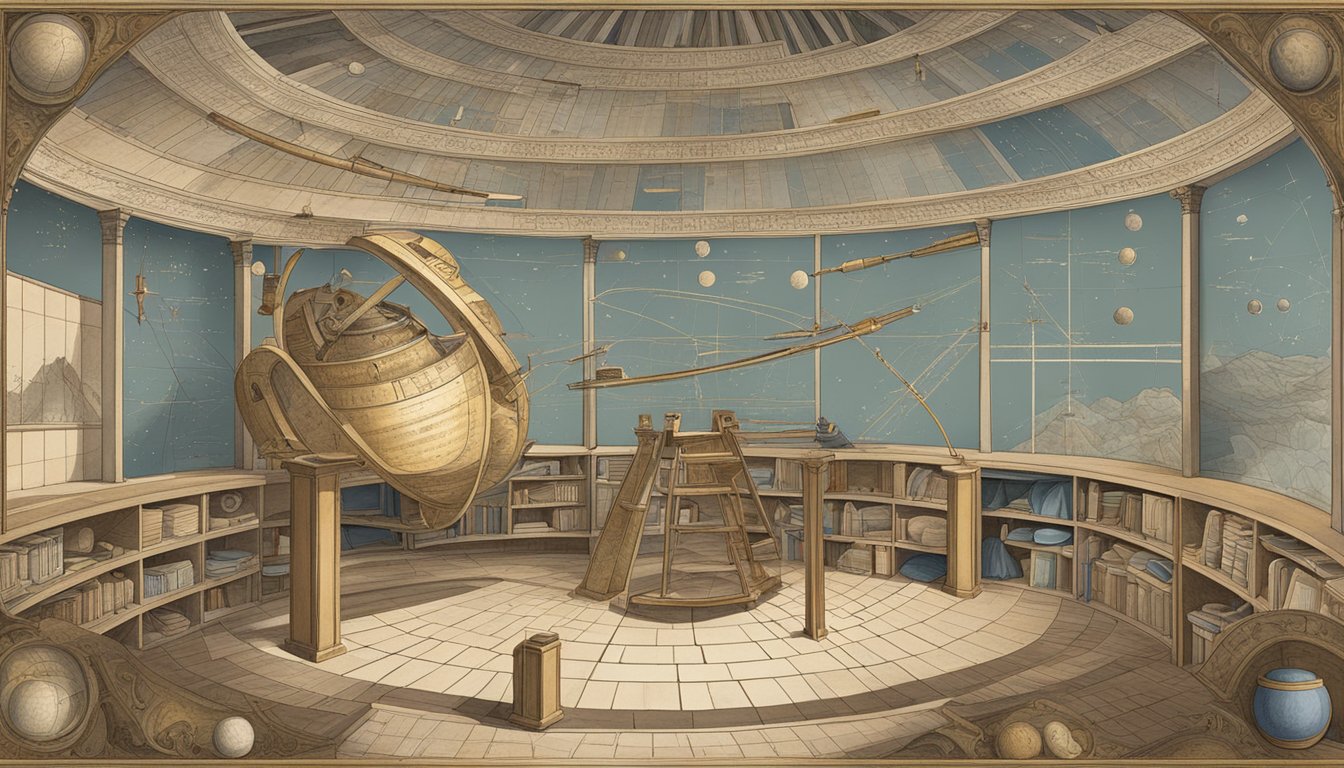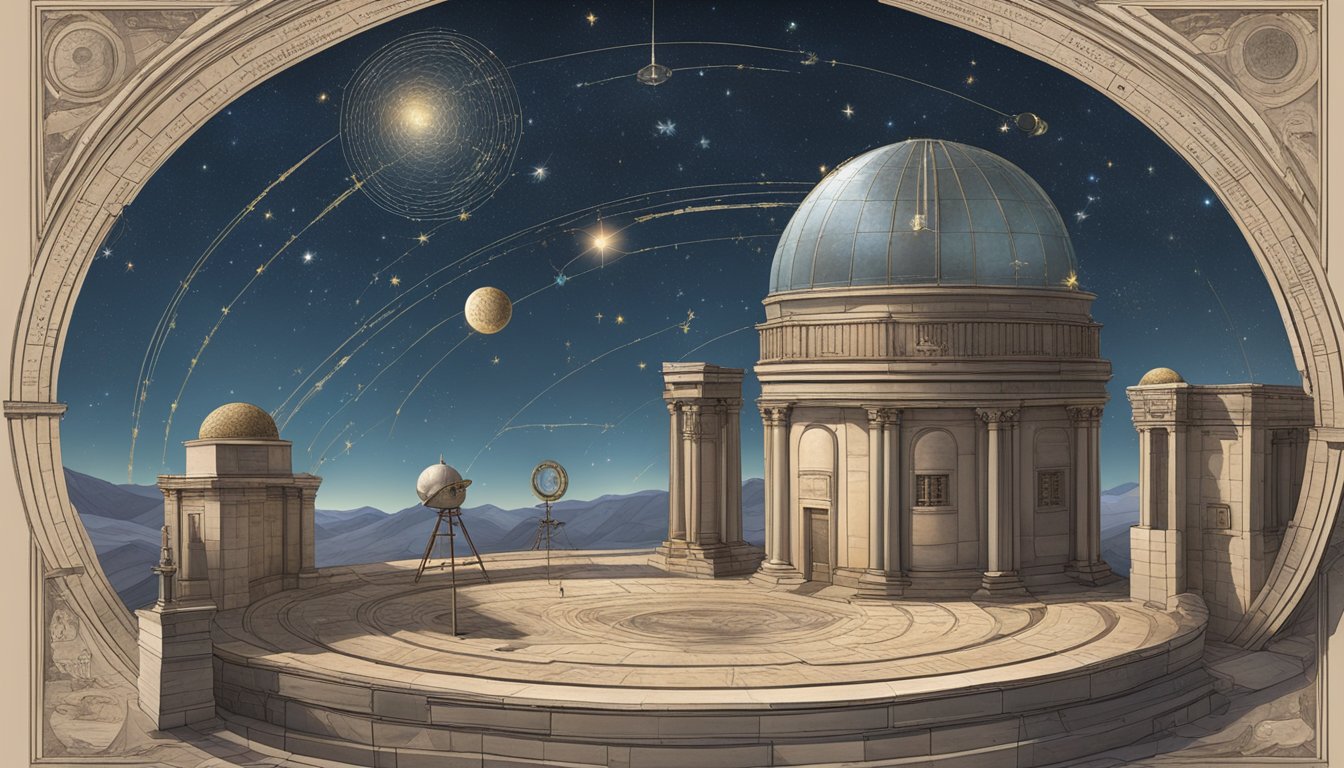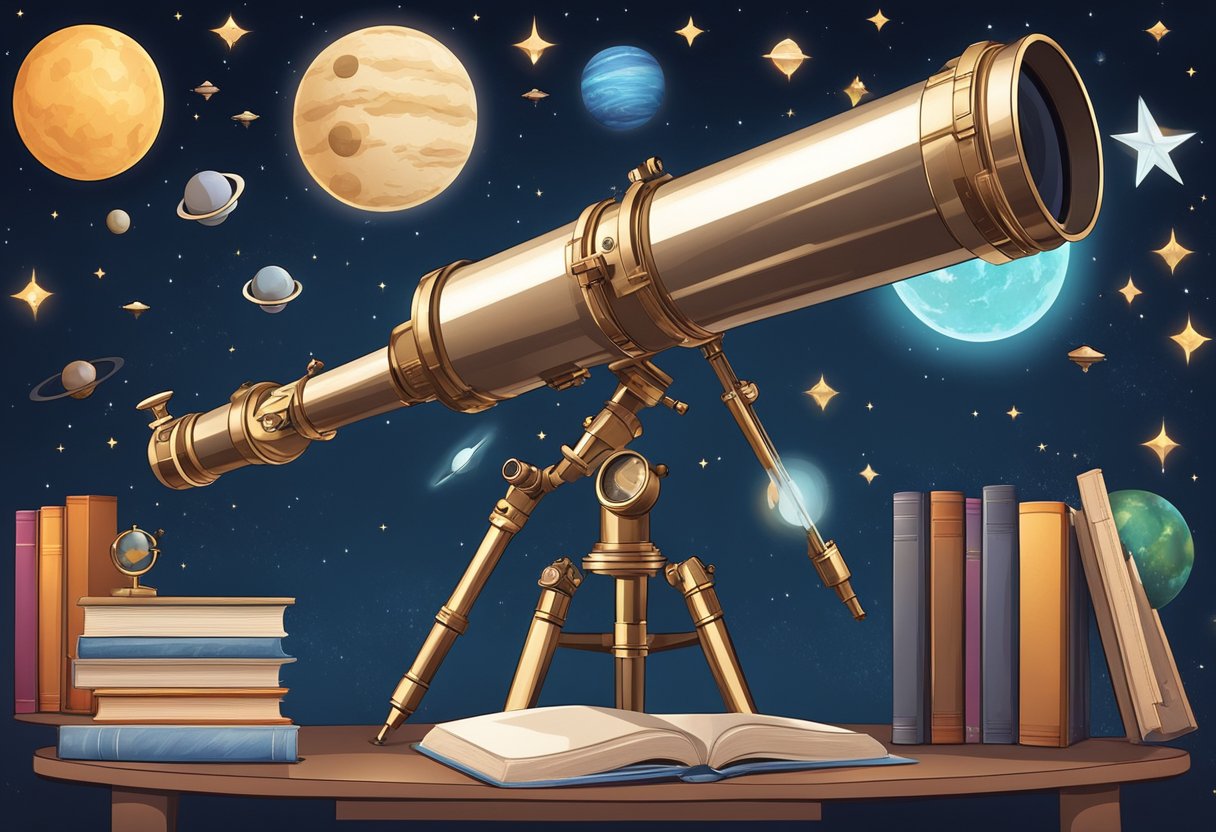The Importance of Astronomy in Ancient Civilizations: Unveiling Historical Insights

Astronomy has played a crucial role in ancient civilizations, intertwining with their daily lives, culture, and even governance. From predicting seasonal changes to guiding agricultural activities, ancient people relied heavily on celestial observations. The Babylonians, for example, meticulously documented the movements of the sun and moon, creating detailed records that formed the basis for calendars and astronomy as we know it today.
In Egypt, the alignment of their monumental structures, such as the pyramids, with specific celestial bodies emphasized the significance they placed on the stars. The Egyptians used observations of the stars to mark the annual flooding of the Nile, a critical event for their agriculture. Similarly, the ancient Greeks developed sophisticated models to explain the movements of heavenly bodies, laying the groundwork for later astronomical advancements.
Each of these civilizations developed unique systems for understanding the cosmos, showcasing their ingenuity and the universal human desire to make sense of the world above. By studying these ancient practices, we gain insight into how early humans interacted with their environment and the foundational role astronomy played in their societies.
Origins of Astronomy Among Ancient Civilizations
Early societies observed the skies, creating intricate systems to understand celestial events. These observations helped them in everyday life, from agriculture to navigation.
Prehistoric Developments and Stone Monuments
In prehistoric times, people were already looking up at the stars. They built structures like Stonehenge to track celestial events. Stonehenge, located in England, aligns with the sun during solstices. This alignment shows that ancient people carefully watched the sky and marked important days.
Other stone monuments, like the ones in Nabta Playa in Egypt, also served similar functions. These sites reveal that prehistoric societies used astronomy to connect their calendars with seasonal changes. These observations were crucial for agricultural planning.
Bronze Age Observations and Mesopotamian Influence
During the Bronze Age, civilizations, particularly in Mesopotamia, advanced their understanding of astronomy. Mesopotamians, including the Sumerians, documented the positions of celestial bodies like the sun, moon, and planets. They used clay tablets for recording observations, which have been found in archaeological digs.
The Mesopotamians also influenced other areas. Babylonian astronomy, in particular, became highly detailed, with records on eclipses and planetary movements. This precise tracking helped them develop one of the earliest known calendars.
Celestial Omens and Babylonian Astrology
Babylonians believed that the movements of celestial bodies were omens from the gods. Astrology became a key aspect of their culture. They thought that events in the sky could predict outcomes on Earth. This belief led them to create detailed records of astronomical phenomena.
These records allowed Babylonians to predict lunar and solar eclipses. They used their understanding of the cosmos to guide decisions in agriculture, politics, and religion. The influence of Babylonian astrology extended beyond their civilization, impacting Greek and later Roman practices.
Babylonian contributions to astronomy laid the foundation for many subsequent developments in the field. Their methods and observations continued to be used for centuries by different cultures.
Astronomical Practices in Different Societies
Different ancient societies developed unique ways to study and use astronomy. These practices influenced their calendars, religious ceremonies, and daily life activities, showing their deep connection with the celestial world.
Egyptian Calendar Systems and Astronomy
The Egyptians created one of the earliest known calendar systems, which was deeply connected to astronomy. They observed the annual rise of Sirius (the Dog Star) just before sunrise, which signaled the flooding of the Nile River, essential for agriculture. The Egyptian calendar had 12 months of 30 days each plus five additional days, totaling 365 days. This solar calendar helped them in planning agricultural activities and holding religious festivals. Temples and pyramids were often aligned with celestial bodies, reflecting their astronomical knowledge and religious beliefs.
Indus Valley Traditions and Astronomical Understanding
The Indus Valley Civilization, which thrived around 2500 BCE in what is now Pakistan and northwest India, also showed advanced astronomical understanding. They used a sophisticated system for tracking astronomical phenomena to assist in agricultural scheduling. Artifacts like pottery and seals suggest alignments with various celestial events. The concepts of time measurement, including calendars reflecting lunar and solar cycles, were crucial. They employed a 360-degree system to represent the celestial sphere and recognized the importance of equinoxes in their planning and ceremonies.
Chinese Celestial Studies and Innovations
Ancient China had a long history of astronomical studies that were significant for both practical and ceremonial purposes. Observing celestial events like eclipses, comets, and planetary movements was essential. They developed precise lunar and solar calendars, which included 12-year cycles based on the movements of Jupiter, known as the Chinese Zodiac. Major innovations included improved star maps and detailed astronomical records. Celestial observations were integral for emperors to legitimate their rule, as they were believed to maintain the cosmic order.
Astrological Significance in the Americas
In the ancient Americas, various civilizations such as the Maya, Aztec, and Inca placed great importance on celestial events. The Maya created complex calendar systems combining the 260-day Tzolk'in and the 365-day Haab' calendars, used to predict agricultural cycles and religious events. They built observatories, like those at Chichen Itza, to study the movements of the sun, moon, and planets. These studies directly influenced their mythologies and day-to-day life. Similarly, the Incas used solar observations from their capital, Cusco, to organize agricultural and religious activities.
Each of these ancient societies developed distinct astronomical practices that were deeply interwoven with their cultural, agricultural, and religious life.
Greek Contributions to Astronomy

Greek astronomers made significant contributions to the field of astronomy, including developing early models of the universe and influential theories. Their work laid the foundations for future advancements in Europe.
The Philosophical Basis of Greek Astronomy
Greek astronomy emerged from a tradition of philosophical inquiry. Early Greek thinkers like Thales and Anaximander discussed the nature of the cosmos philosophically, questioning myths and focusing on natural explanations.
Philosophers like Aristotle believed in a geocentric universe, where Earth was at the center. This idea was widely accepted and influenced many generations of astronomers. They sought to understand the cosmos through observation and logical deduction.
The Greeks emphasized the importance of mathematical principles in explaining celestial phenomena. Geometry and arithmetic played central roles, helping them achieve a systematic approach to the universe.
Key Greek Astronomers and Their Theories
Several key figures stand out in Greek astronomy. Aristotle developed the idea of a spherical Earth and contributed to the geocentric model. Aristarchus of Samos proposed a heliocentric model, suggesting that the Earth revolved around the Sun, though his views were not widely accepted at the time.
Eratosthenes made one of the first measurements of Earth's circumference with remarkable accuracy using simple geometry and observations of the Sun's angles in different locations. Claudius Ptolemy, another prominent figure, developed the Ptolemaic system, refining the geocentric model and presenting detailed astronomical calculations in his work Almagest.
Development of Geocentric Models
The Greeks developed and refined the geocentric model of the universe. This model posited that Earth was the center, surrounded by concentric spheres carrying the planets and stars. Aristotle proposed a system of 55 crystalline spheres to explain the motions of celestial bodies.
Ptolemy's Almagest provided a more sophisticated version with epicycles and deferents to explain the apparent retrograde motion of planets. This model was remarkably accurate and dominated astronomical thought for over a millennium.
The geocentric model was widely accepted because it aligned with everyday observations of the sky and was supported by influential philosophers and scientists.
Influence of Greek Astronomy in Europe
Greek astronomy heavily influenced later European science and astronomy. Many Greek texts were preserved and translated by Islamic scholars and eventually reintroduced to Europe during the Middle Ages.
These works, including Ptolemy's Almagest, provided the foundation for medieval European astronomy. The structure and methods of Greek astronomy influenced notable figures like Copernicus, who later proposed a heliocentric model.
The impact of Greek astronomy extended beyond theoretical models, shaping the development of scientific methods and encouraging a rigorous, observational approach to understanding the universe. These contributions helped pave the way for the Scientific Revolution and modern astronomy.
Advanced Observations and Cosmological Theories

Ancient civilizations made great strides in astronomy, developing sophisticated tools and theories to understand the cosmos. Key advancements took place in Babylon and Alexandria, using precise instruments to enhance their observations.
Sophistication in Babylonian Asterisms and Diaries
Babylonian astronomers were pioneers in systematic stargazing. They created astronomical diaries that recorded celestial events such as lunar eclipses, planetary movements, and star positions. These diaries were crucial for predicting future celestial phenomena.
Their knowledge was not static; it built on observed patterns. Asterisms, which are groups of stars, were cataloged and used to develop early star maps. These maps helped in agricultural planning and religious rituals, showcasing the deep connection between astronomy and daily life in Babylon.
The Hellenistic Period and Advancements in Alexandria
In Alexandria, significant progress was made during the Hellenistic period. The city became a hub for scholars like Ptolemy, who authored the Almagest. This comprehensive treatise compiled earlier works and presented a geocentric model of the universe.
The famous Library of Alexandria was another crucial resource, housing vital texts from across the known world. Scholars here developed precise tables for predicting celestial events, based on years of accumulated observations. Their work laid the foundation for future advancements in cosmology.
Astronomical Instruments and the Precision of Observations
Ancient Greek astronomers and their contemporaries developed various instruments for more accurate observations. Tools like the astrolabe and armillary sphere allowed for precise measurements of star positions and angular distances between celestial bodies.
These instruments improved accuracy, essential for developing models of the cosmos. Their refinements in observational techniques enabled astronomers to challenge existing theories and propose new ones, pushing the boundaries of what was understood about the universe.
Celestial Movements and Timekeeping
Ancient civilizations relied heavily on observing celestial movements for accurate timekeeping. They could track various cycles, such as the sun and the moon, to predict natural events and structure their calendars.
Sun and Lunar Cycles in Ancient Calendrical Systems
Ancient societies used the sun and moon to create calendars. The Babylonians, about 6,000 years ago, built watch towers to observe the night sky, mapping the stars and visible planets. They noted daily, monthly, and yearly positions of celestial bodies.
The Egyptians used the heliacal rising of Sirius to mark the flooding of the Nile, crucial for agriculture. The Maya had a detailed calendar system that tracked the lunar months and solar year, helping them plan agricultural and religious activities. Solstices and equinoxes were key in determining the seasons, deeply influencing farming cycles and rituals.
Understanding Planetary Motion and Retrograde Motion
Early astronomers like the Babylonians and Greeks made significant progress in understanding planetary motion. Planetary movements, including retrograde motion, where a planet appears to move backward in the sky, were meticulously documented.
The Greeks developed complex models to explain these phenomena. They observed that planets like Mars and Jupiter showed retrograde motion, leading to theories of epicycles by Ptolemy. This concept explained that planets moved in small circles while orbiting Earth, providing a framework for future astronomical studies.
These ancient observations of celestial movements laid the foundation for modern astronomy, bridging the gap between mere stargazing and scientific inquiry.
Cultural and Religious Impact of Astronomy
Astronomy significantly influenced ancient cultures and religions. It shaped mythology, established religious observances, and affected social structures with celestial events and predictions.
Astronomy in Mythology and as a Tool for Power
Ancient myths often incorporated celestial bodies. For example, the Greeks personified planets and stars as gods and heroes. Babylonians believed their gods lived among the stars, interpreting planetary movements as divine messages.
Rulers used these celestial signs to legitimize their power. In Mesoamerica, Olmec leaders claimed to interpret the sky, enhancing their authority. This blend of astronomy and mythology reinforced the rulers' divine status.
Temple Alignments and Religious Observances
Many ancient temples were aligned with astronomical events. Egyptian pyramids were positioned to reflect the star Sirius, marking the Nile's inundation. In Mesoamerica, Mayan temples aligned with solar and lunar cycles, hosting ceremonies during solstices and equinoxes.
These alignments were not random. They highlighted significant celestial events, which were crucial for establishing religious festivals and rites. This precise alignment integrated natural science into religious practice.
The Social Function of Celestial Events and Predictions
Celestial events played a central role in ancient societies. Solar and lunar eclipses were seen as omens, often interpreted by priests or astrologers. Predictions based on the stars guided agricultural activities and civic planning.
In China, the emperor's legitimacy depended on accurate astronomical predictions. In Babylon, detailed records of planetary movements were maintained, influencing social and political decisions.
Celestial events also fostered community cohesion. Large gatherings during eclipses or festivals based on celestial cycles provided social unity, reinforcing the community's shared beliefs and practices.
Legacy and Continuity of Ancient Astronomy
Ancient astronomy has had a lasting impact on later scientific developments. Key knowledge from Babylonian and Greek astronomy was preserved and expanded upon, particularly in the Islamic Golden Age and the European Renaissance.
Surviving Texts and the Transmission of Knowledge
Many ancient texts on astronomy have survived, contributing to the continuity of astronomical knowledge. Babylonian observations, recorded on clay tablets, provided detailed accounts of celestial events. Greek astronomy, with works by Aristotle and Ptolemy, offered models that explained planetary movements.
These texts were translated and preserved by Islamic scholars during the Middle Ages. They built upon this legacy, making their own significant contributions. For example, Al-Battani corrected Ptolemy's calculations and inspired future European astronomers. The preservation of these texts allowed the crucial handover of knowledge from one civilization to the next.
Influence on Islamic and European Renaissance Astronomy
Islamic astronomers played a crucial role in shaping what would become modern astronomy. They translated and expanded upon the works of Greek and Babylonian scholars. Observatories flourished in places like Baghdad and Córdoba. Al-Khwarizmi and Al-Sufi were notable figures, enhancing star charts and astronomical tables.
This rich body of knowledge eventually reached Europe and fueled the Renaissance. Medieval European scholars accessed Islamic texts, translated them into Latin, and expanded on them. Figures such as Copernicus were greatly influenced by this heritage, leading to revolutionary advances. Thus, the continuity and evolution of astronomy from ancient times were key drivers of modern scientific progress.




